With the presidential election in less than two months, both sides are revving up their campaign efforts by visiting key states, hosting pivotal conventions and conferences, and releasing their ideas for the future of America. However, there is one tool that can help candidates to get their message across and run a more effective campaign: online video.
What makes online video so different from other communication tools? According to comScore, 85.5 percent of the U.S. Internet audience viewed at least one online video in July 2012. That same month, 184 million U.S. Internet users watched 36.9 billion online videos, meaning incorporating the tool within existing campaign strategies would surely get candidates seen by more people.
Typically, we see online video incorporated into political campaigns as advertisements and recordings of speeches. However, it can be much more -- a gateway to communication, a campaign management tool, and a tool to build a positive image for the candidate. Here's how:
Share timely information
Political figures like Hillary Clinton have used internal memos in the past to share timely information with their staff. However, internal memos can be and have been leaked to the press or the general public, which can damage a campaign. Instead, sharing timely information with campaign staff through online means can be a safer alternative.
When using online video internally, it's important to require user authentication for your videos to ensure they can only be viewed by staff members with the required permissions. For external video viewing with voters, campaigns can utilize public or non-restricted viewing. Find a video platform that will allow both viewing options and metrics tracking, allowing you to see who has viewed your information and for how long. Also, with video platforms that enable real-time discussions, viewers are able to post comments and questions. Collaboration tools can ensure your entire staff -- and only your staff -- stays on the same page.
Manage campaign staff
Staying organized is the key to a successful campaign, and video enables organizations by communicating updates and key execution plans on a timely basis. Video can be delivered quickly and is easily accessible, especially for those on the campaign trail.
It can be time-consuming and expensive to reach every member of a campaign staff, but video allows you to reach your staff in a cost-effective manner. Training via online video is a sensible alternative to more traditional training methods for a variety of reasons. It's simple to create whether you're using pre-recorded material or clips recorded from a webcam. You can also add collaborative elements, like discussion features. Video provides an easy way to update your audience no matter where they are.
Reach your audience
Overall, viewing for online video is up, while TV viewing is down, which indicates the way we seek and receive current information is changing. Barack Obama used online video heavily during the 2008 election, which proved a successful way to "meet" young voters on their preferred medium of communication, the Internet.
Young voters preferred Obama over John McCain by 68 percent to 30 percent, and his Web presence likely caused that. By November 2008, 50 million viewers had spent 14 million hours watching Obama's campaign-related videos on YouTube, four times McCain's viewers. The YouTube channel for the Republican National Convention (RNC) has received 2.8 million video views during this year's event. And the Democratic National Convention's (DNC) YouTube channel garnered more than 1.6 million views.
From these examples, it's clear video can be used as a way to communicate with your audience where they're already seeking information: online. Video provides information in a fast and user-friendly way, and it's cost-effective. Video can also be updated more easily than hard copies of campaign information, meaning you can quickly swap out clips if there's a campaign update or change.
In addition, video allows for collaboration with an audience in real-time (assuming your video platform offers this feature). It also provides direct communication, meaning it doesn't leave room for interpretation or "spinning" from political journalists -- your message is clear to voters.
Build a positive persona
President Obama knows reputation is an important aspect of a presidential campaign. During his 2008 presidential campaign, Obama released nearly 2,000 official YouTube videos, which were watched over 80 million times. He also had 135,000 subscribers and 442,000 instances of user-generated content. Online video can often be less formal than TV or radio spots and can serve to connect a candidate to their audience. Video offered Obama a medium through which he could humanize his campaign and show young voters he wasn't a disconnected politician.
Online video also gives you a lot more freedom to further understand a candidate -- from their personal lives to issues that are important to viewers. For instance, Obama started a fundraising campaign through online video, which featured powerful stories of real people.
More than 1,800 videos were viewed over 110 million times during the last presidential election, according to Steve Grove, head of YouTube politics. "Tech President did a calculation that YouTube was worth $47 million to the Obama campaign if they had bought TV dollars and they didn't spend a penny on it," he said. This goes to show that video can not only be an effective medium to build a positive persona, but it can also do so in a cost-effective way.
As more and more voters move online, it's clear that video is one aspect of communication political figures can use to their advantage. From managing campaign staff to sharing ideas with voters, online video is an effective tool for all candidates and those running political campaigns would be ill-advised to ignore this trend.
Brian Kelly is the Vice President of Sales at KZO Innovations, a video software company that provides an on-demand video platform for small to large enterprises and government customers. Connect with Brian and KZO Innovations on Facebook, Twitter and LinkedIn.
